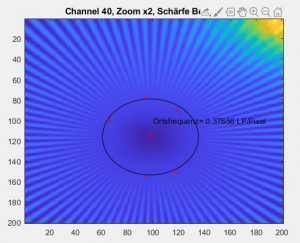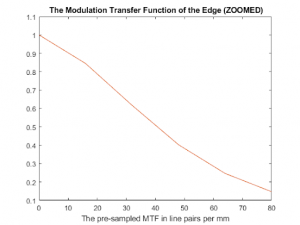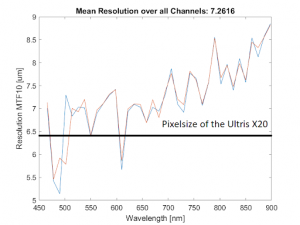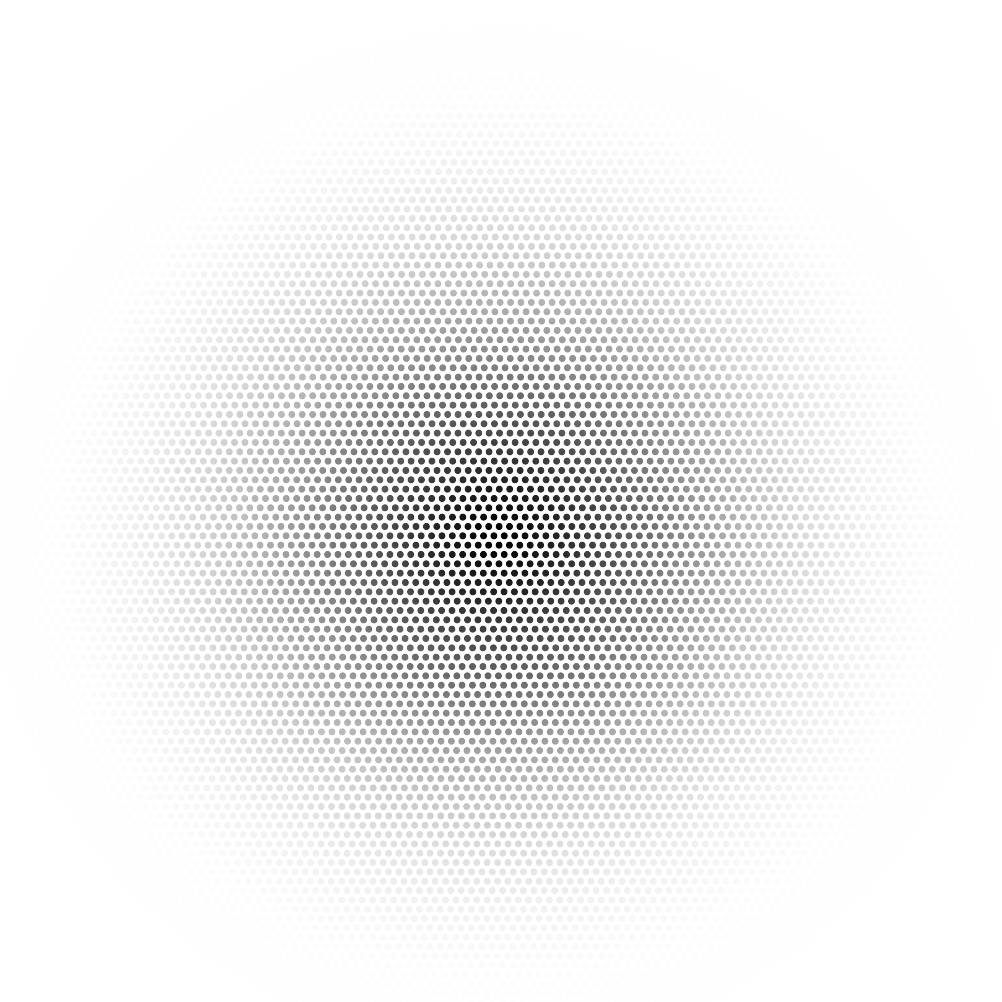How to measure the camera sharpness with a Siemens Star
There are various methods of measuring the optical resolution or sharpness of a camera. One of the simplest methods is the sharpness measurement using a Siemens star, which consists of a pattern of bright “spokes” on a dark background that radiate from a common center and become wider as they get further from it. In a perfect optical system, the spokes meet clearly in the center. In an imperfect system, the spokes blur at some distance away from the center.
In order to read off the sharpness by hand, it is sufficient to enter the radius in which the Moiré pattern is beginning to show clearly into this simple formula:
Spatial frequency = number line / (2 x Radius x pi)
However, since we have the challenge with hyperspectral light field cameras that each camera consists of dozens or even hundreds of lenses, we need a solution that can be automated and complies with standards.

Fig 1: Sample measurement of Siemens star
How to measure the camera sharpness with the Slanted Edge Method
Defined in ISO 12233, the slanted edge method measures the Modulation Transfer Function (MTF) as a function of the spatial frequency of the image. Therefore, a knife-edge target is captured by the camera and a user defined region of interest is selected. The method is described here:
We have adapted this method for use with our hyperspectral cameras. This method is used in our internal quality control to ensure the sharpness of all of our cameras. For each lens of the light field hyperspectral camera, we calculate first the Edge Spread Function and then the MTF of the Lens. From the MTF, we can calculate the maximum theoretical resolution of the camera in micrometers.

Fig 2: Slanted Edge
Results
The Slanted Edge Sharpness measurement is a standard tool for the quality control of all Cubert cameras. With this method, we ensure maximum performance for all of our cameras. Attached are some typical results of our Ultris X20 Model. We reach a very high imaging quality with a resolution of 7.2 µm resolution, compared to the pixel pitch of 6.4µm of the ULTRIS X20 Sensor.


Fig 3 and 4: For each channel, we calculate the edge spread function and from this generate the modulation transfer function in lines per mm.

Fig 5: Plot of the measured maximum objective resolution of one sample ULTRIS X20. The pixel size of the camera is 6.4 micrometers. With a mean resolution of 7.26 micrometers the objective delivers near perfect image reproduction.
